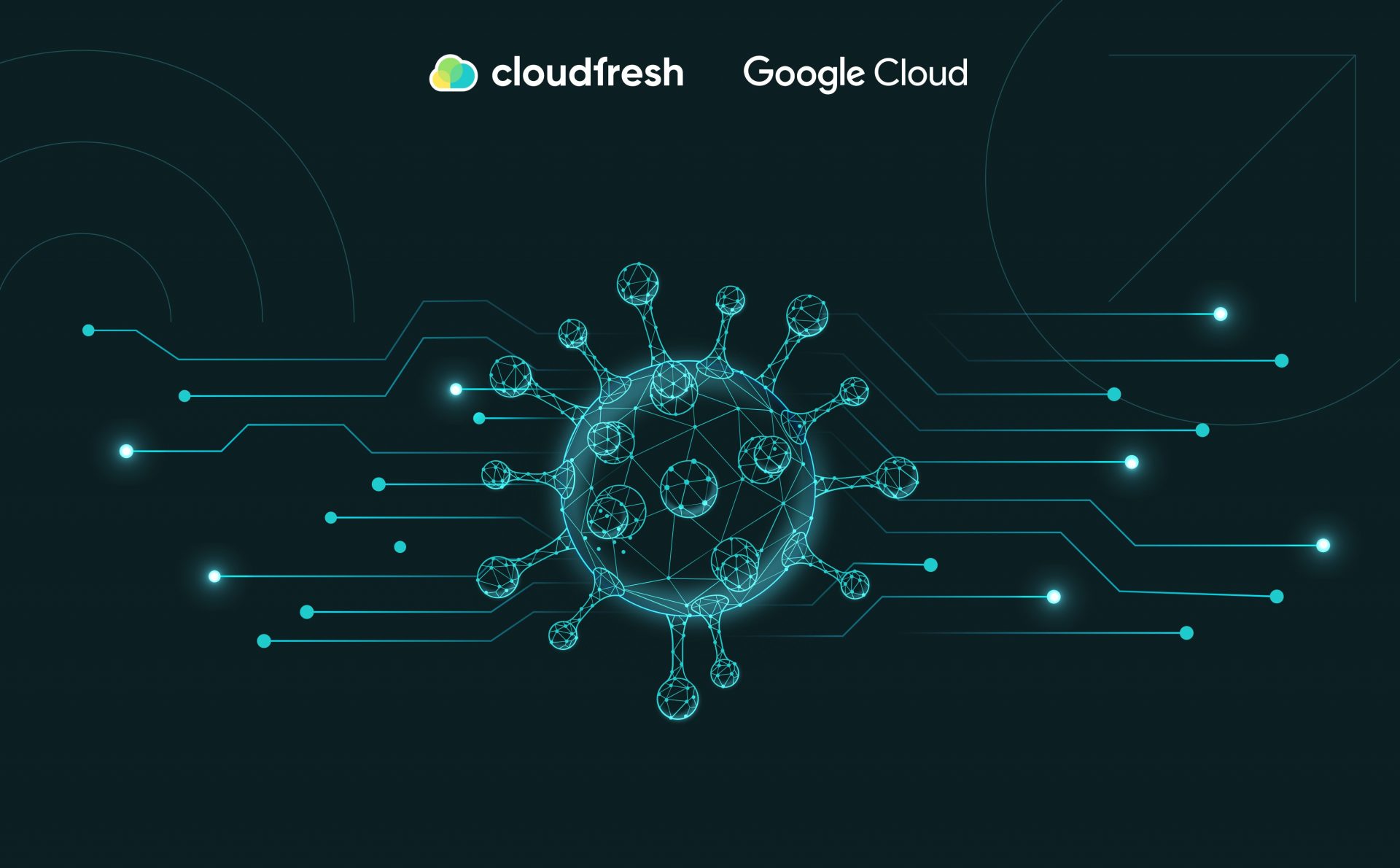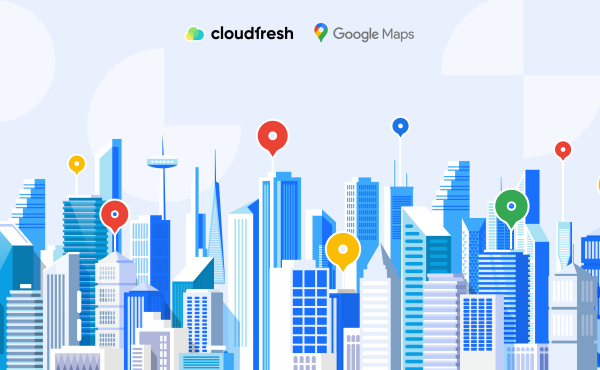Improve the bottom line of your business with the retail solutions from the Google Maps Platform
In a Post-Pandemic World, Digital Transformation in Retail Is Trending Still
- Benefits of Digital Transformation in Retail
- Examples of Digital Transformation for Retail Done Right

- Retail Digital Transformation: What Are the Trends?

- About Us

Ever since the coronavirus pandemic took its toll, the world has transformed, and there’s no coming back. With social distancing norms becoming the ‘new normal,’ people changed the way they went about their daily lives, and shopping was among many things affected. Unable to go out and visit their favorite stores in person due to lockdown restrictions, consumers all over the world flocked to their gadgets. In turn, this caused businesses of all sizes to put digital transformation at the center of their strategies, aiming to achieve the state of being omni-channel.
While COVID-19 has seemingly retreated, digital transformation is definitely here to stay. In this article, we look at digital transformation in retail through the lens of the industry’s most influential players.
Benefits of Digital Transformation in Retail
Whether you’re a non-digital-native retailer trying to keep pace, an e-tailer by birthright, or an on-line marketplace, McKinsey thinks the right tech investments can help you enjoy:
- 3x faster time-to-market (TTM) for digitally crafted offerings.
- 100% increase in the number of competencies acquired by your workforce internally to beat the competition.
- 20% drop in expenditures, which can later be re-invested.
The consulting giant believes digital transformation is key to bridging the gap between on-line and off-line channels and making the E2E customer decision journey easier. With more data supplied and processed than ever, advanced analytics can help retailers achieve granular personalization, while tech, in general, can diversify touchpoints and potentially generate new revenue streams.
Examples of Digital Transformation for Retail Done Right
Let us now take a closer look at players who have already embraced digital transformation in retail. For this overview to be factual, we turned to Investopedia’s most recent ranking, which compares retail companies worldwide across various dimensions culminating in the indicator called the Trailing 12 months revenue.
No. 1: Walmart Inc., US$600.1B
As the world’s largest retailer, Walmart sits on a mountain of data. This vast resource, while valuable, presents a unique challenge: How does one extract meaningful insights from an immense and complex dataset? Furthermore, Walmart strives for continuous innovation, needing a partner to navigate the complexities of modern retail.
BigQuery, Google Cloud’s powerful data warehouse, acts as the cornerstone of Walmart’s data transformation. Its ability to handle massive datasets efficiently allows Walmart to analyze customer behavior, optimize supply chains, and personalize the shopping experience at an unprecedented scale.
Artificial intelligence isn’t just a buzzword that Walmart uses for its digital transformation in retail; it’s a driving force across various sectors. Embedded within numerous business functions, AI helps Walmart make data-driven decisions that prove beneficial to both the company and its customers. This includes personalizing product recommendations, unburdening inventory management, and ultimately ensuring a smooth shopping experience.
Speaking of AI, Gemini also helps Walmart improve the accuracy and detail of millions of product listings in real-time. The result? Customers are empowered with richer product information to make better-informed purchasing decisions. For more information on how Google’s AI can impact your intra-organizational performance, please read our article on Gemini use cases.
No. 4: The Home Depot Inc., US$157.3B
Focus on data analysis fueled The Home Depot’s success in areas like sales forecasting, inventory management, and performance tracking. Yet, to maintain a competitive edge, the retailer required a data strategy that transcended legacy limitations. Enter Google Cloud.
The company’s growth trajectory mirrored the challenges faced by many businesses. Beyond core operations, it needed to painlessly integrate its related ventures like tool rental and home services. Additionally, empowering a rapidly expanding data team and equipping store associates with mobile computing devices became crucial. Ultimately, The Home Depot sought to leverage on-line commerce and artificial intelligence to enhance customer experience while prioritizing security.
The company’s existing on-premises data warehouse buckled under the pressure of increased data volume and complexity. Analysts demanded access to more data for advanced use cases, further straining the system’s capacity. Scaling this infrastructure proved time-consuming and disruptive, requiring months of planning and service outages. This unsustainable model hampered performance and hindered The Home Depot’s ability to execute critical reporting and analytics workloads. It was clear: a new approach was necessary.
The retailer embarked on a strategic journey to the cloud, carefully evaluating the move due to the complexity of migrating a large-scale enterprise data warehouse. After thorough consideration, it chose Google Cloud’s BigQuery as a cloud-based data warehouse solution.
BigQuery, a serverless data warehouse, offered several advantages over The Home Depot’s legacy system, including:
- Reduced operating costs compared to on-premises infrastructure.
- Scaling of data capacity within a week.
- Lack of service interruptions during capacity expansion.
- Powerful capabilities for extracting deeper insights from data.
- No complex system administration required, allowing teams to focus on analysis.
- Identity and Access Management for data security and cross-project user interference prevention.
- Flat-rate monthly pricing for budget certainty and efficient resource allocation.
The Home Depot’s on-premises data warehouse housed 450 terabytes of data. In contrast, its BigQuery data warehouse boasts a staggering 15 petabytes. This vast storage capacity empowers the company to leverage new datasets like website clickstream data and analyze historical data spanning multiple years, significantly broadening its digital transformation in retail. Furthermore, BigQuery facilitates more complex and demanding workloads, including:
- Datalab: Orchestrates analytics via user-friendly Python Notebooks.
- BigQuery ML: Enables machine learning straight on BigQuery data, eliminating data movement.
- AutoML: Automates the process of selecting the optimal model for predictive analytics.
The Home Depot has gone beyond traditional data analysis. By leveraging BigQuery, engineers can now act on performance data across every store and warehouse in real-time — a feat that was simply impossible with a legacy on-premises system.
The BigQuery story is just one chapter in the company’s ongoing collaboration with Google Cloud. With over 600 projects now on the platform, the results are as follows:
- 99% plummet in time spent on supply chain workloads.
- 98% slash in time spent on processing customer orders.
- 96% drop in time spent interacting with store performance dashboards.
- 83% reduction in time spent on conducting sales analysis.
- 78% decrease in time spent on finance workloads.

No. 7: Walgreens Boots Alliance Inc., US$132.7B
Digital transformation in retail often involves developer evangelism. It isn’t just about enthusiasm; it’s about wielding the right tools to demonstrate the value proposition of your APIs to developers and business stakeholders alike.
Imagine this: As a developer evangelist, you can track usage analytics on your APIs through a robust API management platform. This visibility reveals that developers hit your “refill prescription” endpoint ten thousand times per minute. Armed with this data, you can approach business leaders with a compelling story:
Look, we’re seeing significant developer interest in our refill prescription endpoint. This translates to real business value! Every JSON request represents a prescription refill happening in our stores.
The story doesn’t end there. API management tools can reveal even deeper insights. For example, the data might show that customers using this endpoint spend ten times more than average. This additional layer of information paints a clearer picture of the API’s impact on the bottom line.
Walgreens exemplifies how API management fosters value creation in the face of disruption. The rise of smartphone cameras meant fewer customers were printing photos in stores, so instead of clinging to an outdated model, Walgreens embraced disruption.
It built a cutting-edge photo experience with an API that allowed app developers to integrate features like editing, sharing, and storage — all connected to Walgreens printing services. This strategy benefited all parties:
- Customers: A more convenient photo printing experience.
- Developers: The ability to generate revenue through the Walgreens API.
- Walgreens: Rejuvenated the photo business by adapting to changing consumer behavior.
Walgreens’ discovery of API management highlights a crucial lesson: don’t be afraid to disrupt your own business model before someone else does.
No. 9: Target Corp., US$108.7B
Target’s vibrant culture, centered around celebrating customers and sparking joy with every interaction, fuels its innovation and customer loyalty. This commitment to exceeding expectations extends to their technology choices, leading them to Google Cloud for a next-generation platform. By the numbers:
- 1,800 stores: An extensive physical presence.
- 100 million monthly guests: A massive on-line and app user base.
- 350,000 crew members: A dedicated workforce delivering exceptional service.
Target’s mission is to be “a positive force behind millions of people, every day.” Achieving this goal requires not only meeting customer needs but also anticipating and exceeding them. Here’s how Target delivers delight, and how Google Cloud empowers its digital transformation in retail:
- Target prioritizes Google Cloud solutions that consider the impact on customers, team members, and internal IT teams. Their flexibility allows Target to implement innovative store designs and logistical systems without sacrificing user experience.
- Target leverages Google Cloud’s expertise in geolocation, inventory management, and e-commerce to provide experiences such as drive-up orders and curbside delivery.
- A robust infrastructure built on Google Cloud’s Compute Engine, Kubernetes Engine, and serverless cloud computing in retail supports over 5,400 applications running around the clock. This empowers associates with mobile apps like enterprise checkout and enables developers to utilize open-source software, CI/CD pipelines, and serverless delivery for fast, creative work.
Retail Digital Transformation: What Are the Trends?
Based on what some (or all) of the largest retailers on the globe do, we can discern particular trends worth consideration.
Data-Driven Decision-Making: From Gut Feeling to Guided Action
All four companies we explored (Walmart, Home Depot, Walgreens, and Target) emphasize the importance of data. It is a robust tool that enables retailers to analyze customer purchase history, browsing patterns, and loyalty program data. This knowledge empowers them to tailor product offerings, promotions, and marketing campaigns to specific customer segments, ultimately driving sales and loyalty.
Another advantage is personalizing the shopping experience by recommending products relevant to a customer’s past purchases and interests. How can this be done? Via targeted advertising, personalized product displays, or even customized recommendations from store associates armed with customer data.
Last but not least, retailers optimize logistics, inventory management, and supply chains. For instance, analyzing sales trends can help predict demand fluctuations, allowing for better inventory allocation and avoiding stockouts or overstocking.
Cloud Migration: Scaling Up without Breaking the Bank
Three of the companies (Walmart, Home Depot, and Target) have chosen cloud migration as a strategic move. Moving their data warehouses and applications to the cloud offers several benefits.
Cloud services offer a pay-as-you-go model and on-demand resources, allowing retailers to easily scale their infrastructure up or down based on seasonal demands or unexpected surges in traffic. Moreover, the cloud eliminates the need for large upfront capital expenditures on hardware and software. Additionally, cloud providers handle maintenance and upgrades, freeing up internal IT resources for other tasks.
The retail industry’s digital transformation is not the only space benefiting from the cloud, though. For more examples, please refer to our blog post on cloud adoption in financial services.
Focus on Customer Experience: Convenience Is King (and Queen)
All four companies prioritize creating an intuitive shopping experience, both in-store and on-line. For example, mobile apps empower customers with features like self-checkout, product scanning, and loyalty program management. Additionally, apps can be used for personalized promotions, targeted advertising, and store navigation.
Empowering Employees with Technology
Technology isn’t just for customers; it should serve employees as well. Target equips its associates with mobile apps for checkout and inventory management. Home Depot emphasizes the importance of providing store associates with mobile devices, allowing them to access product information and assist customers more effectively.
About Us
Counting over 1,400 customers from 50 countries on multiple continents, Cloudfresh is a global Google Cloud Premier Partner. Whether you’re interested in BigQuery, Gemini, IAM, Datalab, AutoML, Apigee, Compute Engine, GKE, or other retail cloud technologies not mentioned in the article, we can provide Google Cloud consulting services tailored to your use-case scenarios. To take the first step towards ordering a solution that would bolster your digital transformation in retail, please fill out the form below.














